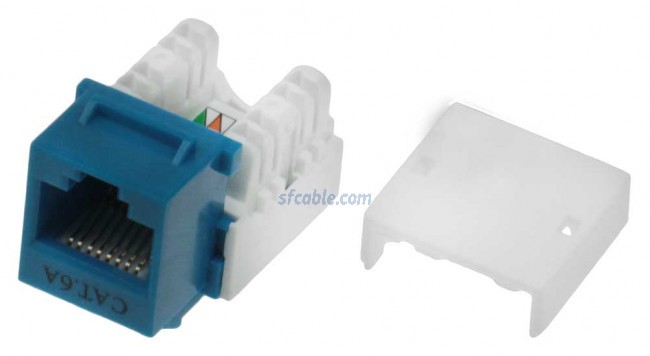Keystone Jack: Choosing One Out of Plenty!
To build a network and to bring a device into a network, one needs to connect the portable device with the central processing unit (CPU). The USB cables, optical fibres and other Networking cables are worthless of a port is not already mounted on the unit. No cable can connect a port less device with the central unit or the port less unit with the device!

So the question that arises is, what lets the portable devices like keyboards, pointers, digital camera connect with the CPU using Ethernet cables, USB Cables or optical fibers?
Keystone Jack is the magic port which aids this functionality. Every connecting device has a female unit installed in it and the cables have the male chords attached on their ends called “keystone plugs”. They mate and the devices are connected where you want it to get connected. Keystone Jacks are the most important units in networking. They are designed to get affixed into keystone plates, keystone boxes and patch panels.
They have a standard design, they are flexible, they are easily mountable, even on the wall! Multiple keystone jacks can also be installed on a single plate having multiple ports. They are available in multiple variants and you can choose in accordance of your need.
Cat5e And Cat6 Keystone Jacks
Both Cat5e and Cat6 are the cables which plug into the same keystone Jack of your Ethernet jack, routers and switches but has a distinct use, design and application. Both are twisted pair cables consisting of copper wires.
Speed
The Cat5e Keystone Jack supports speed limit upto 1000MBPS and the Cat6 cables has a speed limit upto 10GBPS over 120-150 feet. The speed of cat6e of 10GBPS (Gigabit) is limited up to 164 feet and thereafter it’s speed is same as that of Cat5e.
Cost
The cost of the cables vary by length and differ from manufacturer to manufacture. The standard Cat5e costs generally around $0.20 per foot. And the standard Cat6 costs around 20% higher than the Cat5e.
Frequency
The Cat5e frequency range is upto 100MHz and in contrast that of Cat6 is up to 250MHz. Hence it has a higher sound to noise ratio and is also more rigid as compared to Cat5e. The tighter twist of the Cat6 allows it conduct two way communication and it is faster than that of Cat5e.
The cables cannot be identified based on the colors and the variant of the cable is generally printed on the cable. Even though Cat6 can be identified without the print as it thicker than Cat5e as it consists of a thicker copper wire.
Keystone jacks Cat5e and Cat6 both are sound options and it totally depends upon the user to choose the jack. If the servers are placed on the clouds, Cat5e is more economical as the internal connectivity won’t matter but only the internet connectivity will be efficient enough. Cat6 sure does provide you with better performance and it is much efficient if a better investment option if you do not have cables above 120-150 feet.



Comments
Post a Comment